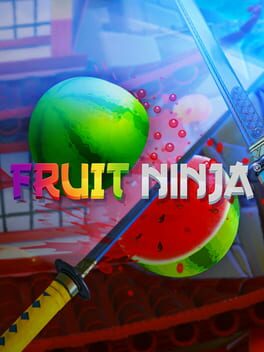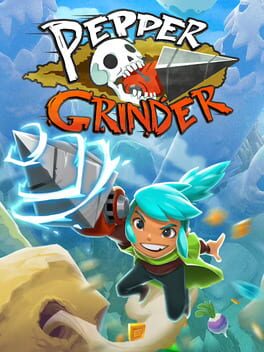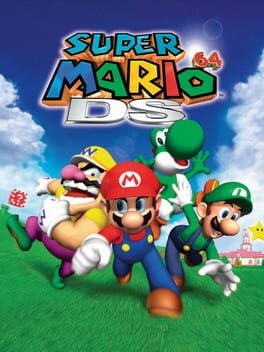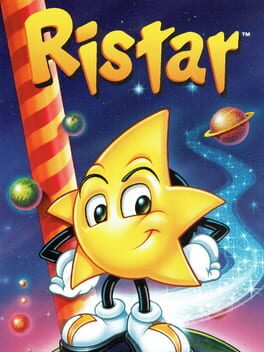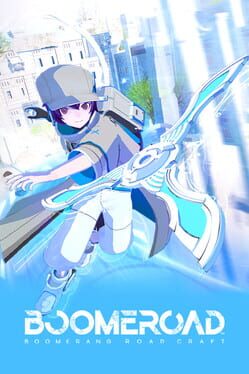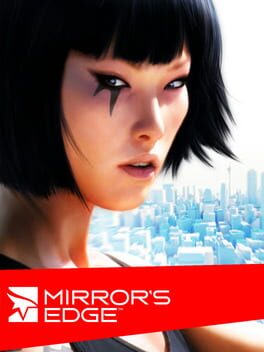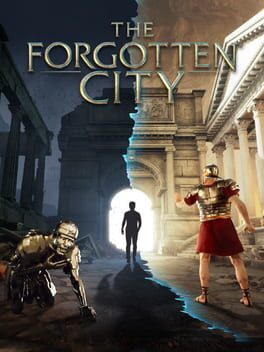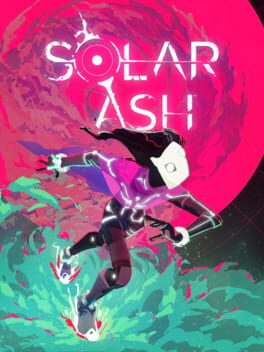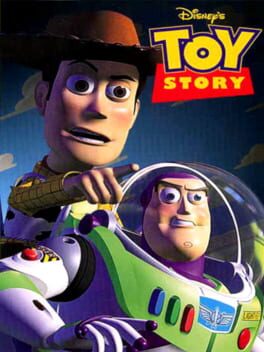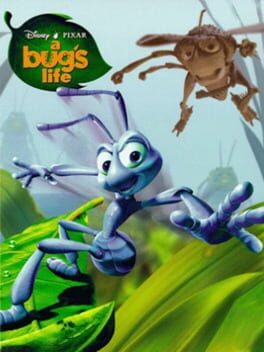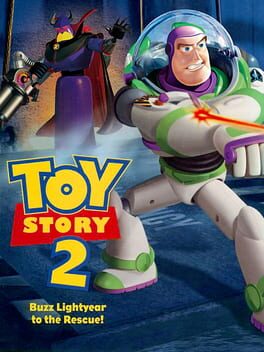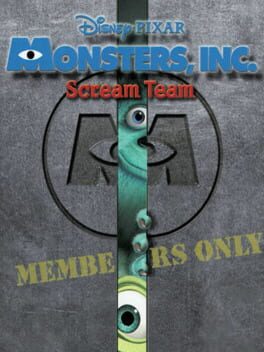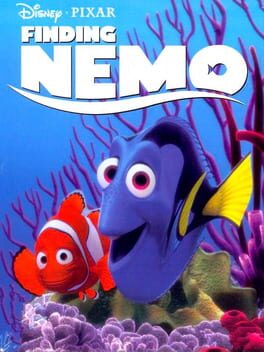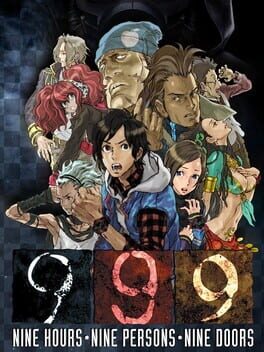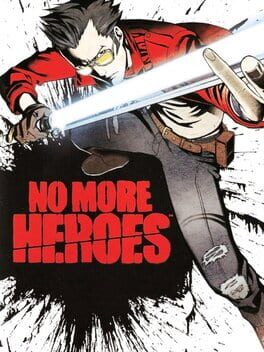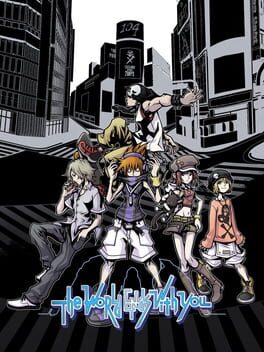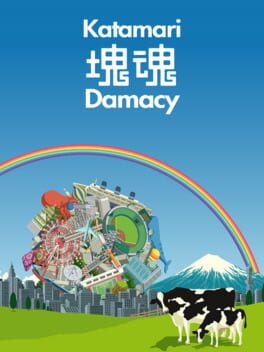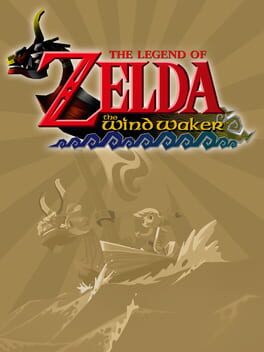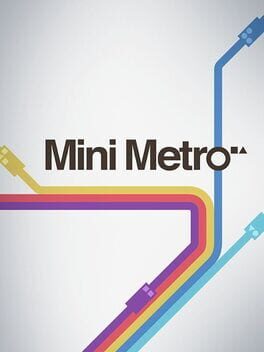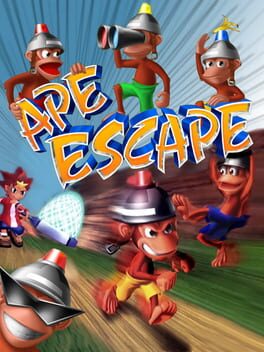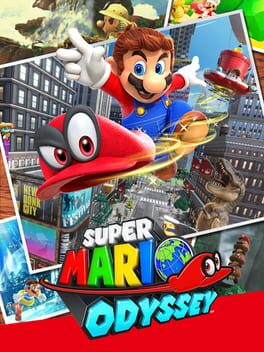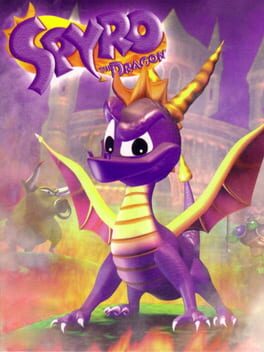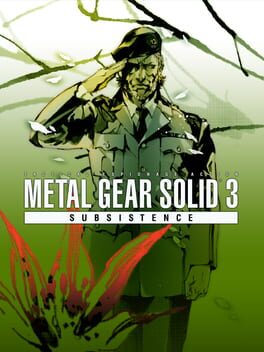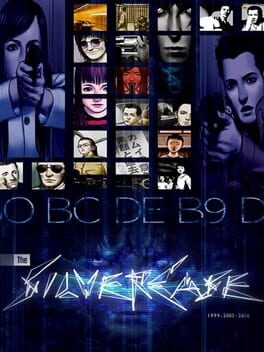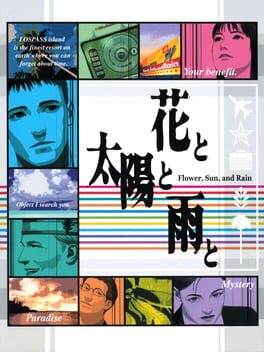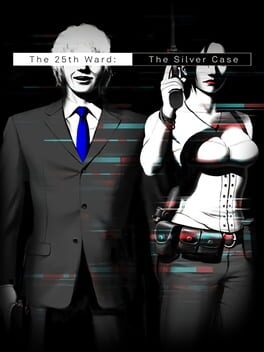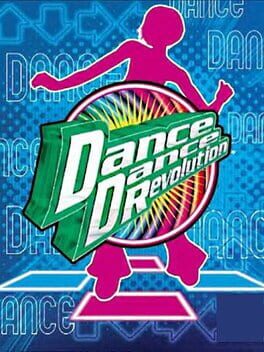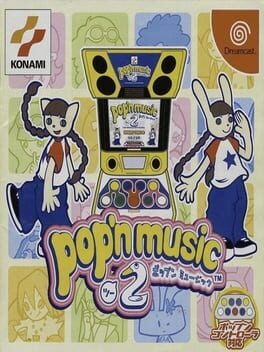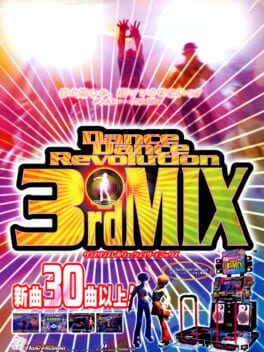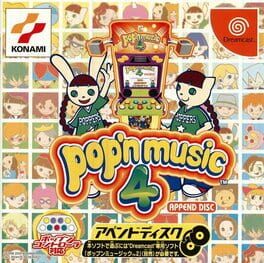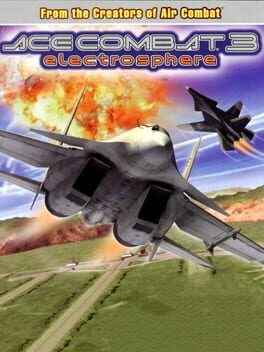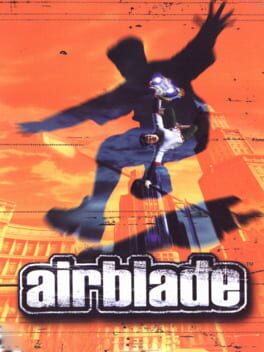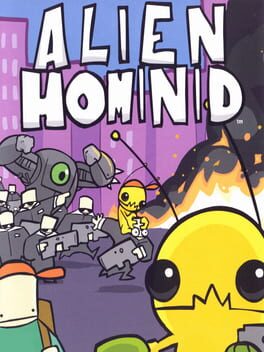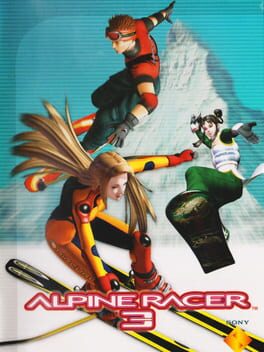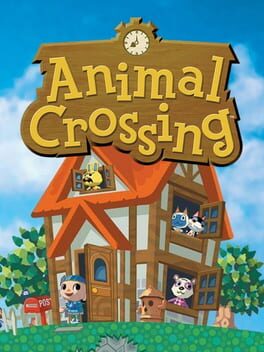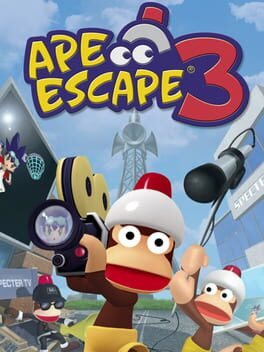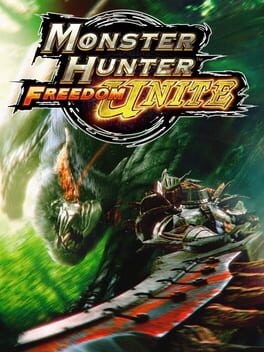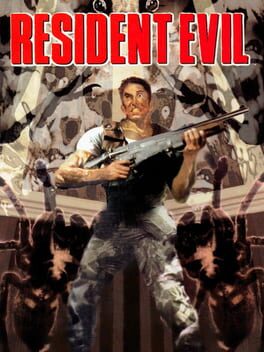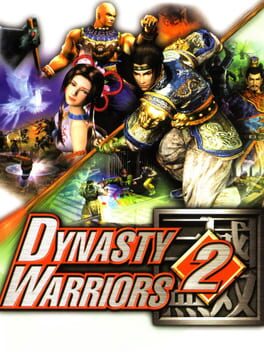bendylegs
182 reviews liked by bendylegs
I really liked Zero Dawn, but man the beginning was boring and it took me a while to get into. So when Forbidden West here had a super slow start, I figured it was just a matter of time before it gets good. And then it never did.
It's a shame because there is quality stuff here, it's just buried underneath so much monotony. Every now and then there's a really cool story point or fun boss fight, but it's just not worth the hours of abysmal platforming, soulless looting, and boring one-dimensional characters that you can't escape from. Big disappointment.
It's a shame because there is quality stuff here, it's just buried underneath so much monotony. Every now and then there's a really cool story point or fun boss fight, but it's just not worth the hours of abysmal platforming, soulless looting, and boring one-dimensional characters that you can't escape from. Big disappointment.
meh.
after 13 sentinels i wanted more of that vanillaware magic.
i didnt quite get that. artstyle is beautiful, the gameplay feels fast & responsive at all times. but this game lacks substance. the story couldnt get any more basic, the characters don't grow on me. i do not want to engage with them or get to know them more. the english dub also sounds kinda whacky. an endless gameplay loop with okayish controls also does not seem to do it for me. they tried to give this some kind of atelier flair by giving you the chance to mix potions and a lot of other things with ingredients you find along the way. this gets more complicated to the point where you just stick with the first formular you learned in the beginning which absolutely is enough for this game because its button mashing at its finest while looking out for your level. if you do that, this game is really easy.
and sorry but doing this over and over with all the cast? i dont know if i want to do that. step by step maybe but this story isnt worth grinding another 40ish hours to fight the same enemies in the same areas again just with a different character.
after 13 sentinels i wanted more of that vanillaware magic.
i didnt quite get that. artstyle is beautiful, the gameplay feels fast & responsive at all times. but this game lacks substance. the story couldnt get any more basic, the characters don't grow on me. i do not want to engage with them or get to know them more. the english dub also sounds kinda whacky. an endless gameplay loop with okayish controls also does not seem to do it for me. they tried to give this some kind of atelier flair by giving you the chance to mix potions and a lot of other things with ingredients you find along the way. this gets more complicated to the point where you just stick with the first formular you learned in the beginning which absolutely is enough for this game because its button mashing at its finest while looking out for your level. if you do that, this game is really easy.
and sorry but doing this over and over with all the cast? i dont know if i want to do that. step by step maybe but this story isnt worth grinding another 40ish hours to fight the same enemies in the same areas again just with a different character.
Review in progress:
Just as overrated as Muramasa for me. The gameplay loop is repetitive and the story is as boring as it is wordy. I'm not a fan of the level design, either. You go traverse through a series of tiny, flat, and nearly identical-looking zones. There's no sense of cohesion. I'm not saying it needs to be a Metroidvania, but having areas that are larger, interconnected, and visually distinct would go a long way toward making the world feel more alive.
The alchemy and farming mechanics didn't really add a lot to the core experience.
I had to drop some items for an alchemy tutorial and was kicked out of the room without warning afterward, which made me lose everything on the ground. I'm so used to autosave being a standard feature in modern releases at this point, but it's completely absent here, so I lost a fair bit of progress. Good times.
At least the artwork is great outside of some questionable character designs. That's definitely their strong suit.
I'm still not getting the Vanillaware praise. Hopefully, I'll enjoy 13 Sentinels more.
Just as overrated as Muramasa for me. The gameplay loop is repetitive and the story is as boring as it is wordy. I'm not a fan of the level design, either. You go traverse through a series of tiny, flat, and nearly identical-looking zones. There's no sense of cohesion. I'm not saying it needs to be a Metroidvania, but having areas that are larger, interconnected, and visually distinct would go a long way toward making the world feel more alive.
The alchemy and farming mechanics didn't really add a lot to the core experience.
I had to drop some items for an alchemy tutorial and was kicked out of the room without warning afterward, which made me lose everything on the ground. I'm so used to autosave being a standard feature in modern releases at this point, but it's completely absent here, so I lost a fair bit of progress. Good times.
At least the artwork is great outside of some questionable character designs. That's definitely their strong suit.
I'm still not getting the Vanillaware praise. Hopefully, I'll enjoy 13 Sentinels more.
Fruit Ninja VR
2016
So this year I was going to make a conscious effort to work through my backlog. Buy less games, play more etc. That quickly fell apart in the first month however I've done decently at playing them so far and the Odin Sphere remaster Leifthrasir is one of the older PSN purchase I have yet to play . I decided it was a good title to finally finish on my 2024 games played list.
Odin Sphere is the third Vanillaware title I've played at the time of writing. The first was Dragon's Crown, a game I truly hated but perhaps approached wrong expecting a four player Guardian Heroes. The second was 13 Sentinels: Aegis Rim which I utterly adored for it's keep you guessing sci-fi story. (First quick review I wrote on Backloggd actually) It's fitting then that Odin Sphere would sit somewhere in the middle between them as a game I like but with a lot of flaws preventing me loving it and hard to actually recommend.
So lets get the positive aspects out in the open first as this game does have a lot of good going for it. Firstly the artwork and animations are pretty stunning. Vanillaware is pretty famous for it's layered 2D art style and animations. The characters and enemies all stand out and the usage of colour and style makes it feel like a painting in motion. To carry on the presentation side of my positive compliments, the whimsical soundtrack is stunning. I especially like the theme song but it's all gorgeous wrapping up Odin Sphere into a great looking and sounding package.
I actually had to double check this was originally a PS2 game because even as a remaster it just doesn't feel like it. Equally it just doesn't play like it came from that console. The combat animations and battles are all so smooth chaining from moves to move. This isn't an insult to the PS2, it was an amazing system, just a compliment to Odin sphere's visuals and animations. When in combat the characters have a large amount of moves with more unlocking as the game progresses. It allows you to chain various moves and skills into large combos. Hitting a group of enemies into a huge combo with perfect blocks to keep the chain is initially really fun. I'm saying initially because this is where my praise of Odin sphere starts to breakdown a bit unfortunately. The game is based around five characters:
- Gwyndolin, a Valkyrie Princess.
- Cornelius, a prince cursed into a beast form.
- Mercedes, a fairy Princess.
- Oswald, an orphaned knight with a cursed sword.
- Velvet, a forest Witch.
Similar to Vanillaware's later title 13 Sentinels each character has their own story arc playing the game from different perspectives before a final chapter linking the full story together. In principal the idea is great. Vanillaware themselves proved this can work wonderfully as a concept. Here it is extremely flawed though. My biggest issue is there is no variety between each character play through. They have different moves, weapons and some unique skills on a couple of them but they are fundamentally the same. When you take that into account along with the fact that each one of them plays through the same 6 locations fighting the same 20 ish enemies and same bosses and no matter how gorgeous Odin Sphere is, and no matter how nicely it plays it just becomes tedious. You have to play all five scenarios to see the ending and by the 4th character I was just feeling burnt out of it all.
Perhaps because it's an action RPG there is a greater downtime between the story sections that could have kept the mystery going for me to want to push onwards but I feel the narrative behind the game overall just isn't strong enough to justify the multiple perspectives. There isn't a huge mystery that gets unveiled or a surprise twist. Each scenario explains a few things more but I didn't find any of it compelling. Everything around the multiple protagonist formula here undermines the story and the mechanics. Some of the story arcs on each character don't quite match with some odd reasons to make sure the character does visit the snow mountain or lava kingdom etc. Having a food resource cooking mini game for levelling is a neat little idea but gets boring having to save ingredients and feed each character as a core way to level them up every time. Exploring never has anything new on different characters, same levels, same equipment. This feels like a 6 hour game padded out to a 30 hour game and the fairy tale esq setting and lore aren't strong enough to carry that.
I hate typing this as I wanted to love Odin Sphere like I did 13 Sentinels. I am however grateful to it for being the game that put Vanillaware on the map, the game that is almost like a later prototype they built on. I'm glad I played it, it's well made, and looks and plays wonderfully it's just lacking meat on it's bones.
I wish you really could just grow sheep from trees.
+ Gorgeous art design.
+ Fun , fast and fluid combat system.
+ Pleasant whimsical soundtrack and great voice acting (I played it in Japanese).
- The game loop is extremely repetitive and the story cannot carry nearly the exact same content from a slightly different view point. Only one real negative but it's a big one.
Odin Sphere is the third Vanillaware title I've played at the time of writing. The first was Dragon's Crown, a game I truly hated but perhaps approached wrong expecting a four player Guardian Heroes. The second was 13 Sentinels: Aegis Rim which I utterly adored for it's keep you guessing sci-fi story. (First quick review I wrote on Backloggd actually) It's fitting then that Odin Sphere would sit somewhere in the middle between them as a game I like but with a lot of flaws preventing me loving it and hard to actually recommend.
So lets get the positive aspects out in the open first as this game does have a lot of good going for it. Firstly the artwork and animations are pretty stunning. Vanillaware is pretty famous for it's layered 2D art style and animations. The characters and enemies all stand out and the usage of colour and style makes it feel like a painting in motion. To carry on the presentation side of my positive compliments, the whimsical soundtrack is stunning. I especially like the theme song but it's all gorgeous wrapping up Odin Sphere into a great looking and sounding package.
I actually had to double check this was originally a PS2 game because even as a remaster it just doesn't feel like it. Equally it just doesn't play like it came from that console. The combat animations and battles are all so smooth chaining from moves to move. This isn't an insult to the PS2, it was an amazing system, just a compliment to Odin sphere's visuals and animations. When in combat the characters have a large amount of moves with more unlocking as the game progresses. It allows you to chain various moves and skills into large combos. Hitting a group of enemies into a huge combo with perfect blocks to keep the chain is initially really fun. I'm saying initially because this is where my praise of Odin sphere starts to breakdown a bit unfortunately. The game is based around five characters:
- Gwyndolin, a Valkyrie Princess.
- Cornelius, a prince cursed into a beast form.
- Mercedes, a fairy Princess.
- Oswald, an orphaned knight with a cursed sword.
- Velvet, a forest Witch.
Similar to Vanillaware's later title 13 Sentinels each character has their own story arc playing the game from different perspectives before a final chapter linking the full story together. In principal the idea is great. Vanillaware themselves proved this can work wonderfully as a concept. Here it is extremely flawed though. My biggest issue is there is no variety between each character play through. They have different moves, weapons and some unique skills on a couple of them but they are fundamentally the same. When you take that into account along with the fact that each one of them plays through the same 6 locations fighting the same 20 ish enemies and same bosses and no matter how gorgeous Odin Sphere is, and no matter how nicely it plays it just becomes tedious. You have to play all five scenarios to see the ending and by the 4th character I was just feeling burnt out of it all.
Perhaps because it's an action RPG there is a greater downtime between the story sections that could have kept the mystery going for me to want to push onwards but I feel the narrative behind the game overall just isn't strong enough to justify the multiple perspectives. There isn't a huge mystery that gets unveiled or a surprise twist. Each scenario explains a few things more but I didn't find any of it compelling. Everything around the multiple protagonist formula here undermines the story and the mechanics. Some of the story arcs on each character don't quite match with some odd reasons to make sure the character does visit the snow mountain or lava kingdom etc. Having a food resource cooking mini game for levelling is a neat little idea but gets boring having to save ingredients and feed each character as a core way to level them up every time. Exploring never has anything new on different characters, same levels, same equipment. This feels like a 6 hour game padded out to a 30 hour game and the fairy tale esq setting and lore aren't strong enough to carry that.
I hate typing this as I wanted to love Odin Sphere like I did 13 Sentinels. I am however grateful to it for being the game that put Vanillaware on the map, the game that is almost like a later prototype they built on. I'm glad I played it, it's well made, and looks and plays wonderfully it's just lacking meat on it's bones.
I wish you really could just grow sheep from trees.
+ Gorgeous art design.
+ Fun , fast and fluid combat system.
+ Pleasant whimsical soundtrack and great voice acting (I played it in Japanese).
- The game loop is extremely repetitive and the story cannot carry nearly the exact same content from a slightly different view point. Only one real negative but it's a big one.
Pepper Grinder
2024
Ah. That’s more like it.
As the one person I know who likes Donkey Kong Country, Drill Dozer, and that one burrowing escape sequence from Ori and the Will of the Wisps, I knew Pepper Grinder was going to be right up my alley. What impressed me though, was just how precisely the game melded its influences into something that felt simultaneously fresh yet familiar. The level design is classic obstacle escalation (introduce a concept, scale it up, throw in a twist, and then run the player through a final exam into their victory lap) with DKC inspired secrets with skull coin collectibles for unlocking secret levels. Many of the usual formula beats are present as well to force execution tests, from the usual moving parts in the forms of cannons, rope swings, and grappling points, to constantly present sources of danger like the freezing ocean or the temporary dirt patches created from cooling lava. What sets Pepper Grinder apart however, is that the terrain itself is the main obstacle. It feels like such a natural pairing to seamlessly mesh environmental navigation with the course’s very foundation, and the best moments of the game lean into funneling the player through various layers of shifting and isolated terrain while tearing through all that may stand in their way.
That said, I think to really understand the nuances of Pepper Grinder, one has to readily commit to its time attack mode. I could have been sold on the game-feel alone as an amalgam of Donkey Kong Country’s momentum physics and Drill Dozer’s force feedback, but playing under circumstances that force you to squeeze every possible second out of the timer gives the player a better appreciation of its movement mechanics. Pepper is not very fast on foot, nor can she naturally jump very far. Therefore, you’d think that most speed comes from tunneling through terrain, but it’s not quite that either. Rather, the player has to maintain momentum through the interplay of drilling and jumping by exiting terrain via the drill run (boosting right as you’re about to leave a patch of dirt), which commits the player to the projected arc leaving the terrain but with the reward of significantly more speed. The result is some of the weightiest and most satisfying movement I have ever experienced in any platformer. I was constantly figuring out new ways to save seconds by timing by boosts both within terrain and right before exiting terrain (since you can’t just spam boost and using it too early can lock you out from getting the necessary boost jump out of terrain), skipping certain obstacles entirely with well-placed drill runs, and figuring out how to manage my health to bypass unfavorable cycles and damage boost past mines and thorns. Some of those gold time attack medals were tight ordeals, but I absolutely savored every moment of the grind.
Bosses as a whole are a significant improvement from the usual quality of those in Donkey Kong Country. You’re not safe just waiting above ground, and burrowing to dodge attacks forces you to at least dash-dance underground since drilling means you can’t stay in one place. As a result, the player is constantly on the move, and you’re incentivized to do so anyways given that most of the bosses require multiple hits to defeat and aren’t the usual “invincible until they’re done attacking” crop from DKC. The biggest complaint I can levy here is that boss hit/hurtboxes can feel imprecise; I’ve heard that many players have had difficulty figuring out how to correctly drill into the beetle boss’s underbelly, and while I had no issues there, I did die a few times from the skeleton king’s heel hitbox where there was no visible attack in its vicinity. Still, I much prefer these boss fights over many of its peers, and figuring out when and how to best aim drill runs from the ground to speedrun bosses was just as much of a pleasure as speedrunning the courses themselves.
There are a few questionable design choices that could be touched upon here. Firstly, there’s a shop system present where you can purchase optional stickers from a gacha machine as well as temporary health boosts. The former is mostly forgivable given that they don’t impact the gameplay otherwise and can be cleared in about three minutes of purchasing and opening capsules. That said, I feel as if the latter could be removed entirely given that I never felt pressured to purchase insurance for courses and bosses, especially because I was often taking hits anyways to skip past obstacles and because you’re not going to regain the extra health capacity in-level once it’s gone. Secondly, bosses in time-attack mode force you to watch their opening unskippable cutscenes before getting to the action, and this gets extremely irritating when you’re constantly restarting fights to get better times. Finally, Pepper Grinder has a few gimmick areas in the forms of a couple of robot platforming segments, two snowmobile sections where you just hold forward on the control stick, and a couple of run-and-gun levels with little drilling involved. I can look past most of these given that they don’t take up much time and that I enjoyed all the minecart levels from DKC as is, though I do wish that they spaced the gimmicks apart a bit more given that levels 4-3 and 4-4 both have significant run and gun segments sending each course off.
If I did have any lasting complaints, it would be that I just want more of this game. Most players will finish adventure mode in under four hours. That said, even despite a lack of polish here and there, I absolutely adore Pepper Grinder. At this time of writing, I’ve 100%ed the game and even gone back to a few time trials after snagging all the gold medals just to further polish my records. It’s often difficult for me to pin down what makes a game feel good to play, but in this case, I just know. Pepper Grinder feels like an adrenaline rush made just for me, and though its execution barriers and short length will likely make this a tough sell for many, it is undoubtably some of the most fun I have had with a game this year. If you’re curious or enjoy anything that I’ve discussed in this write-up, please give the demo a shot. They don’t make 2D platformers like this anymore, and Pepper Grinder’s existence leaves me wondering why when they absolutely killed it on their first try.
As the one person I know who likes Donkey Kong Country, Drill Dozer, and that one burrowing escape sequence from Ori and the Will of the Wisps, I knew Pepper Grinder was going to be right up my alley. What impressed me though, was just how precisely the game melded its influences into something that felt simultaneously fresh yet familiar. The level design is classic obstacle escalation (introduce a concept, scale it up, throw in a twist, and then run the player through a final exam into their victory lap) with DKC inspired secrets with skull coin collectibles for unlocking secret levels. Many of the usual formula beats are present as well to force execution tests, from the usual moving parts in the forms of cannons, rope swings, and grappling points, to constantly present sources of danger like the freezing ocean or the temporary dirt patches created from cooling lava. What sets Pepper Grinder apart however, is that the terrain itself is the main obstacle. It feels like such a natural pairing to seamlessly mesh environmental navigation with the course’s very foundation, and the best moments of the game lean into funneling the player through various layers of shifting and isolated terrain while tearing through all that may stand in their way.
That said, I think to really understand the nuances of Pepper Grinder, one has to readily commit to its time attack mode. I could have been sold on the game-feel alone as an amalgam of Donkey Kong Country’s momentum physics and Drill Dozer’s force feedback, but playing under circumstances that force you to squeeze every possible second out of the timer gives the player a better appreciation of its movement mechanics. Pepper is not very fast on foot, nor can she naturally jump very far. Therefore, you’d think that most speed comes from tunneling through terrain, but it’s not quite that either. Rather, the player has to maintain momentum through the interplay of drilling and jumping by exiting terrain via the drill run (boosting right as you’re about to leave a patch of dirt), which commits the player to the projected arc leaving the terrain but with the reward of significantly more speed. The result is some of the weightiest and most satisfying movement I have ever experienced in any platformer. I was constantly figuring out new ways to save seconds by timing by boosts both within terrain and right before exiting terrain (since you can’t just spam boost and using it too early can lock you out from getting the necessary boost jump out of terrain), skipping certain obstacles entirely with well-placed drill runs, and figuring out how to manage my health to bypass unfavorable cycles and damage boost past mines and thorns. Some of those gold time attack medals were tight ordeals, but I absolutely savored every moment of the grind.
Bosses as a whole are a significant improvement from the usual quality of those in Donkey Kong Country. You’re not safe just waiting above ground, and burrowing to dodge attacks forces you to at least dash-dance underground since drilling means you can’t stay in one place. As a result, the player is constantly on the move, and you’re incentivized to do so anyways given that most of the bosses require multiple hits to defeat and aren’t the usual “invincible until they’re done attacking” crop from DKC. The biggest complaint I can levy here is that boss hit/hurtboxes can feel imprecise; I’ve heard that many players have had difficulty figuring out how to correctly drill into the beetle boss’s underbelly, and while I had no issues there, I did die a few times from the skeleton king’s heel hitbox where there was no visible attack in its vicinity. Still, I much prefer these boss fights over many of its peers, and figuring out when and how to best aim drill runs from the ground to speedrun bosses was just as much of a pleasure as speedrunning the courses themselves.
There are a few questionable design choices that could be touched upon here. Firstly, there’s a shop system present where you can purchase optional stickers from a gacha machine as well as temporary health boosts. The former is mostly forgivable given that they don’t impact the gameplay otherwise and can be cleared in about three minutes of purchasing and opening capsules. That said, I feel as if the latter could be removed entirely given that I never felt pressured to purchase insurance for courses and bosses, especially because I was often taking hits anyways to skip past obstacles and because you’re not going to regain the extra health capacity in-level once it’s gone. Secondly, bosses in time-attack mode force you to watch their opening unskippable cutscenes before getting to the action, and this gets extremely irritating when you’re constantly restarting fights to get better times. Finally, Pepper Grinder has a few gimmick areas in the forms of a couple of robot platforming segments, two snowmobile sections where you just hold forward on the control stick, and a couple of run-and-gun levels with little drilling involved. I can look past most of these given that they don’t take up much time and that I enjoyed all the minecart levels from DKC as is, though I do wish that they spaced the gimmicks apart a bit more given that levels 4-3 and 4-4 both have significant run and gun segments sending each course off.
If I did have any lasting complaints, it would be that I just want more of this game. Most players will finish adventure mode in under four hours. That said, even despite a lack of polish here and there, I absolutely adore Pepper Grinder. At this time of writing, I’ve 100%ed the game and even gone back to a few time trials after snagging all the gold medals just to further polish my records. It’s often difficult for me to pin down what makes a game feel good to play, but in this case, I just know. Pepper Grinder feels like an adrenaline rush made just for me, and though its execution barriers and short length will likely make this a tough sell for many, it is undoubtably some of the most fun I have had with a game this year. If you’re curious or enjoy anything that I’ve discussed in this write-up, please give the demo a shot. They don’t make 2D platformers like this anymore, and Pepper Grinder’s existence leaves me wondering why when they absolutely killed it on their first try.
Super Mario 64 DS
2004
nintendo salvaging the american gaming market with the release of the NES was the modern inflection point for our industry, in some ways that are less obvious than others. the console enshrined gaming as a medium with legitimacy beyond the original fad-like relevance of the atari VCS, but the centralization of this success around nintendo gave the company an uncomfortable amount of leverage. this immediately portended poorly with the simultaneous release of the console's killer app: super mario bros., which gestured to a sinister rejection of the console's original intent. look to the japanese launch line-up and you'll see arcade staples such as donkey kong and popeye; games that lauded precise, restricted play with definitive rules and short runtimes. super mario bros. was a refutation of this design philosophy in favor of the loosey-goosey variable jump heights, frequent health restoration items, and long hallways of copy-paste content replacing the tightly paced experiences that defined the era before. the NES still featured arguably the greatest console expressions of the rigorous arcade action experiences that defined the '80s - castlevania, ninja gaiden, and the early mega mans all come to mind - but the seeds super mario bros. planted would presage a shift into more and more experiences that coddled the player rather than testing their fortitude. in some ways, super mario bros. lit the match that would leave our gaming landscape in the smoldering ruins of the AAA design philosophy.
the '90s only deepened nintendo's exploration of trends that would further attempt to curb the arcade philosophy, which still floated on thanks to the valiant efforts of their competitors at sega, capcom, konami, and others. super mario world kicked off nintendo's 16-bit era with an explicitly non-linear world map that favored the illusion of charting unknown lands over the concrete reality of learning play fundamentals, and its pseudo-sequel yoshi's island would further de-emphasize actual platforming chops by giving the player a generous hover and grading them on their ability to pixel hunt for collectables rather than play well, but the most stunning example of nintendo's decadence in this era is undoubtedly donkey kong '94. the original donkey kong had four levels tightly wound around a fixed jump arc and limited ability for mario to deal with obstacles; its ostensible "remake" shat all over its legacy by infusing mario's toolkit with such ridiculous pablum such as exaggerated flip jumps, handstands, and other such acrobatics. by this point nintendo was engaging in blatant historical revisionism, turning this cornerstone of the genre into a bug-eyed circus romp, stuffed with dozens of new puzzle-centric levels that completely jettisoned any semblance of toolkit-oriented level design from the original game. and yet, this was the final fissure before the dam fully burst in 1996.
with the release of the nintendo 64 came the death knell of the industry: the analog stick. nintendo's most cunning engineers and depraved designers had cooked up a new way to hand unprecedented control to the player and tear down all obstacles standing in the way of the paternalistic head-pat of a "job well done" that came with finishing a game. with it also came this demonic interloper's physical vessel, super mario 64; the refined, sneering coalescence of all of nintendo's design tendencies up to this point. see here a game with enormous, previously unfathomable player expression, with virtually every objective solvable in myriad different ways to accommodate those who refuse to engage with the essential challenges the game offers. too lazy to even attempt some challenges at all? feel free to skip over a third of the game's "star" objectives on your way to the final boss; you can almost see the designers snickering as they copy-pasted objectives left and right, knowing that the majority of their player base would never even catch them in the act due to their zombie-like waddle to the atrociously easy finish line. even as arcade games stood proud at the apex of the early 3D era, super mario 64 pulled the ground out underneath them, leaving millions of gamers flocking to similar experiences bereft of the true game design fundamentals that had existed since the origination of the medium.
this context is long but hopefully sobering to you, the reader, likely a gamer so inoculated by the drip-feed of modern AAA slop that you likely have regarded super mario 64 as a milestone in 3D design up to now. yet, it also serves as a stark contrast to super mario 64 ds, a revelation and admission of guilt by nintendo a decade after their donkey kong remake plunged modern platformers into oblivion.
the d-pad alone is cool water against the brow of one in the throes of a desert of permissive design techniques. tightening up the input space from the shallow dazzle of an analog surface to the limitations of eight directions instantly reframes the way one looks at the open environments of the original super mario 64. sure, there's a touch screen option, but the awkward translation of a stick to the literal flat surface of the screen seems to be intentionally hobbled in order to encourage use of the d-pad. while moving in a straight line may still be simple, any sort of other action now begets a pause for reflection over the exact way one should proceed. is the sharp 45 or 90 degree turn to one side "good enough", or will I need to make a camera adjustment in-place? for this bridge, what combination of angles should I concoct in order to work through this section? the removal of analog control also forces the addition of an extra button to differentiate between running and walking, slapping the player on the wrist if they try to gently segue between the two states as in the original. the precision rewards those who aim to learn their way around the rapid shifts in speed while punishing those who hope they can squeak by with the same sloppy handling that the original game allowed.
on its own this change is crucial, but it still doesn't cure the ills of the original's permissive objective structure. however, the remake wisely adds a new character selection system that subtly injects routing fundamentals into the game's core. for starters: each of the characters has a separate moveset, and while some characters such as yoshi and luigi regrettably have the floaty hover and scuttle that I disdained in yoshi's island, it's at least balanced here by removing other key aspects of their kit such as wall jumps and punches. the addition of wario gives the game a proper "hard mode," with wario's lumbering speed and poor jump characteristics putting much-needed limiters on the game's handling. for objectives that now explicitly require wario to complete, the game is effectively barring you from abusing the superior movement of the original game by forcing you into a much more limited toolkit with rigid d-pad controls, the kind of limitations this game absolutely needed in order to shine.
that last point about objectives that specifically require a given character is key: the remake segments its objectives based on which characters are viable to use to complete them. however, while in some cases the game may telegraph which specific characters are required for a particular task, in many cases the "correct" solution is actually to bounce between the characters in real time. this is done by strategically placing hats for each of the characters throughout the map - some attached to enemies and some free-floating - which allow the player to switch on the fly. this adds new detours to the otherwise simple objectives that vastly increases their complexity: which toolkit is best suited for which part of each mission? how should my route be planned around the level to accommodate hats I need to pick up? will I be able to defeat an enemy that's guarding the hat if I had to? this decision-making fleshes out what was previously a mindless experience.
there's one additional element to this system that truly elevates it to something resembling the arcade experiences of yore. while you can enter a level as any character, entering as yoshi allows you to preemptively don the cap of any other character as you spawn in, preventing the player from having to back-track to switch characters. on the surface this seems like another ill-advised QoL feature, but some subtle features reveal something more fascinating. yoshi has no cap associated with him, so to play as him, one must enter the level with him. however, you often need to switch to another character in the middle of a level. how do you switch back? by taking damage. to solve the ridiculously overstuffed eight piece health bar of the original, this remake transforms it into a resource you expend in order to undergo transformation. sure, one could theoretically collect coins in order to replenish this resource, but this adds a new layer onto the routing that simply didn't exist in the original game, where there were so many ways to circumvent obstacles with the permissive controls that getting hit in the first place was often harder than completing the objective. by reframing the way that the player looks at their heath gauge, the game is calling to mind classic beat 'em ups, where the health gauge often doubled as a resource to expend for powerful AoE supers.
the game still suffers from much of the rotten design at the core of its forebear; these above changes are phenomenal additions, but they're grafted onto a framework that's crumbling as you delve into it. regardless, the effort is admirable. for a brief moment, nintendo offered an apology to all of those hurt by their curbstomping of the design philosophies that springboarded them into juggernaut status in the first place, and they revitalized classic design perspectives for many millions more who first entered the world of gaming after it had already been tainted by nintendo's misdeeds. the galaxy duology, released a few years after this game, attempted to rework the series from the ground up with a new appreciation for arcade design by limiting the bloated toolkit of previous games and linearizing levels, but the damage had already been done. the modern switch era has magnified nintendo's worst tendencies, putting proper execution and mechanical comprehension to the wayside as they accelerate the disturbing "the player is always right" principles that have infested their games since that original super mario bros. by looking at super mario 64 ds in this context, we at least get a glimpse of what a better world could have looked like had nintendo listened to their elders all along.
the '90s only deepened nintendo's exploration of trends that would further attempt to curb the arcade philosophy, which still floated on thanks to the valiant efforts of their competitors at sega, capcom, konami, and others. super mario world kicked off nintendo's 16-bit era with an explicitly non-linear world map that favored the illusion of charting unknown lands over the concrete reality of learning play fundamentals, and its pseudo-sequel yoshi's island would further de-emphasize actual platforming chops by giving the player a generous hover and grading them on their ability to pixel hunt for collectables rather than play well, but the most stunning example of nintendo's decadence in this era is undoubtedly donkey kong '94. the original donkey kong had four levels tightly wound around a fixed jump arc and limited ability for mario to deal with obstacles; its ostensible "remake" shat all over its legacy by infusing mario's toolkit with such ridiculous pablum such as exaggerated flip jumps, handstands, and other such acrobatics. by this point nintendo was engaging in blatant historical revisionism, turning this cornerstone of the genre into a bug-eyed circus romp, stuffed with dozens of new puzzle-centric levels that completely jettisoned any semblance of toolkit-oriented level design from the original game. and yet, this was the final fissure before the dam fully burst in 1996.
with the release of the nintendo 64 came the death knell of the industry: the analog stick. nintendo's most cunning engineers and depraved designers had cooked up a new way to hand unprecedented control to the player and tear down all obstacles standing in the way of the paternalistic head-pat of a "job well done" that came with finishing a game. with it also came this demonic interloper's physical vessel, super mario 64; the refined, sneering coalescence of all of nintendo's design tendencies up to this point. see here a game with enormous, previously unfathomable player expression, with virtually every objective solvable in myriad different ways to accommodate those who refuse to engage with the essential challenges the game offers. too lazy to even attempt some challenges at all? feel free to skip over a third of the game's "star" objectives on your way to the final boss; you can almost see the designers snickering as they copy-pasted objectives left and right, knowing that the majority of their player base would never even catch them in the act due to their zombie-like waddle to the atrociously easy finish line. even as arcade games stood proud at the apex of the early 3D era, super mario 64 pulled the ground out underneath them, leaving millions of gamers flocking to similar experiences bereft of the true game design fundamentals that had existed since the origination of the medium.
this context is long but hopefully sobering to you, the reader, likely a gamer so inoculated by the drip-feed of modern AAA slop that you likely have regarded super mario 64 as a milestone in 3D design up to now. yet, it also serves as a stark contrast to super mario 64 ds, a revelation and admission of guilt by nintendo a decade after their donkey kong remake plunged modern platformers into oblivion.
the d-pad alone is cool water against the brow of one in the throes of a desert of permissive design techniques. tightening up the input space from the shallow dazzle of an analog surface to the limitations of eight directions instantly reframes the way one looks at the open environments of the original super mario 64. sure, there's a touch screen option, but the awkward translation of a stick to the literal flat surface of the screen seems to be intentionally hobbled in order to encourage use of the d-pad. while moving in a straight line may still be simple, any sort of other action now begets a pause for reflection over the exact way one should proceed. is the sharp 45 or 90 degree turn to one side "good enough", or will I need to make a camera adjustment in-place? for this bridge, what combination of angles should I concoct in order to work through this section? the removal of analog control also forces the addition of an extra button to differentiate between running and walking, slapping the player on the wrist if they try to gently segue between the two states as in the original. the precision rewards those who aim to learn their way around the rapid shifts in speed while punishing those who hope they can squeak by with the same sloppy handling that the original game allowed.
on its own this change is crucial, but it still doesn't cure the ills of the original's permissive objective structure. however, the remake wisely adds a new character selection system that subtly injects routing fundamentals into the game's core. for starters: each of the characters has a separate moveset, and while some characters such as yoshi and luigi regrettably have the floaty hover and scuttle that I disdained in yoshi's island, it's at least balanced here by removing other key aspects of their kit such as wall jumps and punches. the addition of wario gives the game a proper "hard mode," with wario's lumbering speed and poor jump characteristics putting much-needed limiters on the game's handling. for objectives that now explicitly require wario to complete, the game is effectively barring you from abusing the superior movement of the original game by forcing you into a much more limited toolkit with rigid d-pad controls, the kind of limitations this game absolutely needed in order to shine.
that last point about objectives that specifically require a given character is key: the remake segments its objectives based on which characters are viable to use to complete them. however, while in some cases the game may telegraph which specific characters are required for a particular task, in many cases the "correct" solution is actually to bounce between the characters in real time. this is done by strategically placing hats for each of the characters throughout the map - some attached to enemies and some free-floating - which allow the player to switch on the fly. this adds new detours to the otherwise simple objectives that vastly increases their complexity: which toolkit is best suited for which part of each mission? how should my route be planned around the level to accommodate hats I need to pick up? will I be able to defeat an enemy that's guarding the hat if I had to? this decision-making fleshes out what was previously a mindless experience.
there's one additional element to this system that truly elevates it to something resembling the arcade experiences of yore. while you can enter a level as any character, entering as yoshi allows you to preemptively don the cap of any other character as you spawn in, preventing the player from having to back-track to switch characters. on the surface this seems like another ill-advised QoL feature, but some subtle features reveal something more fascinating. yoshi has no cap associated with him, so to play as him, one must enter the level with him. however, you often need to switch to another character in the middle of a level. how do you switch back? by taking damage. to solve the ridiculously overstuffed eight piece health bar of the original, this remake transforms it into a resource you expend in order to undergo transformation. sure, one could theoretically collect coins in order to replenish this resource, but this adds a new layer onto the routing that simply didn't exist in the original game, where there were so many ways to circumvent obstacles with the permissive controls that getting hit in the first place was often harder than completing the objective. by reframing the way that the player looks at their heath gauge, the game is calling to mind classic beat 'em ups, where the health gauge often doubled as a resource to expend for powerful AoE supers.
the game still suffers from much of the rotten design at the core of its forebear; these above changes are phenomenal additions, but they're grafted onto a framework that's crumbling as you delve into it. regardless, the effort is admirable. for a brief moment, nintendo offered an apology to all of those hurt by their curbstomping of the design philosophies that springboarded them into juggernaut status in the first place, and they revitalized classic design perspectives for many millions more who first entered the world of gaming after it had already been tainted by nintendo's misdeeds. the galaxy duology, released a few years after this game, attempted to rework the series from the ground up with a new appreciation for arcade design by limiting the bloated toolkit of previous games and linearizing levels, but the damage had already been done. the modern switch era has magnified nintendo's worst tendencies, putting proper execution and mechanical comprehension to the wayside as they accelerate the disturbing "the player is always right" principles that have infested their games since that original super mario bros. by looking at super mario 64 ds in this context, we at least get a glimpse of what a better world could have looked like had nintendo listened to their elders all along.
Ristar
1995
started to see the vision once I realized the grab (your only verb outside of jumping) gives you i-frames when you bounce off of whatever you're grabbing... pretty cool wrinkle on an otherwise plain set of mechanics. a lot of the game is carried by the dense mix of geometric terrain and organic outgrowths a la sonic; it's no surprise that much of this team got rolled into sonic team for NiGHTS into dreams the year after. said team really demonstrates their technical aptitude as well, with some stunning overlapping parallax on stages such as planet automaton and swirling line scrolling in the background of the itamor lunch fight. ristar emotes fluidly, with his walking scowl morphing into a grin and twirl upon defeating hard enemies. occasionally he'll even show a penchant for childlike play, such as in this snowball fight setpiece.
a first impression yields something a little dry on the gameplay front, with single-hit enemies and slow movement compounding into something more leisurely than interesting. thankfully around the halfway point the design veers into level-unique puzzles and setpieces. the one that stuck out to me the most was a series of areas in planet 4 involving babysitting this radio(?) item across various hazards in order to give to various birds who want them blocking your way. presages a klonoa style of puzzles built from manipulating objects in the environment rather than working with pre-defined aspects of the player's toolkit. near the end the game veers into some execution challenges as well, with mixed results. ristar's grab actually has a lot more going on to meets the eye: not only does he have the aforementioned i-frames, but he also gains a bit of height off his bounce, and he can hold onto some interactables indefinitely, swinging back and forth using his arms as a tether. the former gets used for a couple climbing challenges jumping between walls and swinging poles, which makes for some pleasant execution trials in the midst of the level-specific stuff. the latter never gets expanded on quite as much, probably because ristar maintains no momentum from his swinging when he releases due to bouncing back off of the fulcrum he's attached to, so actually manipulating the technique to achieve certain bounce angles is a bit unintuitive.
bosses are neat across the board; while somewhat cycle-based, the designers trickle a couple small points for attacking them before they're obviously wide-open. some of these (I'm thinking of specifically the bird boss on planet 4 and its array of non-linear projectiles) encourage the i-frame abuse in interesting ways. by the end of the game, however, it seems like they expect you to exploit it pretty openly to get anywhere, and by that point the bosses end up becoming grab spam. definitely makes the fights fly by quicker, but I find myself preferring the more cautious approach I took during the earlier bosses, although I would imagine upon a replay some of the same techniques apply.
a first impression yields something a little dry on the gameplay front, with single-hit enemies and slow movement compounding into something more leisurely than interesting. thankfully around the halfway point the design veers into level-unique puzzles and setpieces. the one that stuck out to me the most was a series of areas in planet 4 involving babysitting this radio(?) item across various hazards in order to give to various birds who want them blocking your way. presages a klonoa style of puzzles built from manipulating objects in the environment rather than working with pre-defined aspects of the player's toolkit. near the end the game veers into some execution challenges as well, with mixed results. ristar's grab actually has a lot more going on to meets the eye: not only does he have the aforementioned i-frames, but he also gains a bit of height off his bounce, and he can hold onto some interactables indefinitely, swinging back and forth using his arms as a tether. the former gets used for a couple climbing challenges jumping between walls and swinging poles, which makes for some pleasant execution trials in the midst of the level-specific stuff. the latter never gets expanded on quite as much, probably because ristar maintains no momentum from his swinging when he releases due to bouncing back off of the fulcrum he's attached to, so actually manipulating the technique to achieve certain bounce angles is a bit unintuitive.
bosses are neat across the board; while somewhat cycle-based, the designers trickle a couple small points for attacking them before they're obviously wide-open. some of these (I'm thinking of specifically the bird boss on planet 4 and its array of non-linear projectiles) encourage the i-frame abuse in interesting ways. by the end of the game, however, it seems like they expect you to exploit it pretty openly to get anywhere, and by that point the bosses end up becoming grab spam. definitely makes the fights fly by quicker, but I find myself preferring the more cautious approach I took during the earlier bosses, although I would imagine upon a replay some of the same techniques apply.
Boomeroad
2024
Bandai-Namco released Boomeroad worldwide two days ago as part of a suite of simple and experimental games to train new recruits from their indie developer Gyaar Studio. The concept here combines a standard 3D platformer with boomerang throwing that creates grindable rails that can be chained for extended mid-air traversal. You refresh your energy gauge by passing through rings and landing on platforms, and you can increase the gauge's capacity by collecting optional artifacts. Unfortunately, the gameplay is undercooked. You can't adjust the shape of the boomerang's arc besides flattening the upward curve a little, there's very few interactable objects (switches and fans) that force the player to throw the boomerang at them for activation, and you can in fact avoid most of these elements entirely by throwing two chained boomerang arcs to climb up and walk on top of the level's walls, skipping entire sections of the level while never running out of gauge. While I thought speedrun mode would mitigate most of these shortcomings, I don't find the movement satisfying enough because there's fairly little momentum conserved upon jumping off of rails for speeding up, so the movement itself lacks weightiness and route planning isn't very interesting when you're incentivized to just follow the set path of rings for time bonuses. I suppose there's only so much I can complain about a free game nevertheless, and although I don't see Gyaar Studio returning to this, I do think they've got a solid concept on their hands that could prove to be an interesting 3D puzzle-platformer if thoroughly fleshed out with more committal movement and tighter level design.
I want to love this game so bad, because it IS fun and I see all of the neat momentum shmovement you can pull off with it. And I don't even mind that the controls are weird and jank. Because this game overall has the energy and vibes of a slightly obscure early PS2 platformer with how it's trying something completely weird and different with the analog sticks and does a lot different like the platformers of old that did stuff before platformers had a lot of their conventions set in stone.
The first half or so of this game is a lot of fun, especially gratifying to get your speed up and blitz through levels. And there's a high skill ceiling to the game too, so it's probably gonna be a lot of fun to see speedruns of it. Just sadly I feel like the last third or so of the game starts to get too precise for how loosey-goosey the controls are and how easy it is the overshoot jumps. Also maybe just me but I have never had such an abysmal time with depth perception in a game before.
The bosses were interesting at first - I liked how the first two were platforming challenges more than they were just straight up fights, but then they go back to just doing regular fights and all the bosses got incredibly boring after that.
And boy howdy did I find my fair share of glitches. I've gotten trapped on geometry where Penny's just stuck in a perpetual falling state so I had to reset to the last checkpoint. I've had Penny pull herself into a block, causing the camera to launch itself into the void and taking a full minute to catch back up to me. I barely graze the deathplane water in world 2 and it counted as dying even though Penny was visibly walking on land. I've gotten stuck inside the horn tunnels in the final world. The Puppet Penny race apparently has a checkpoint over a pit so I got dropped into it until I ran out of lives. I died during the phase transition cutscene of the Judge Rufus fight more than once. And I kept straight up falling through the loop-de-loop in the final boss. Jeez.
I don't want to give this game a 5/10 cause I see what it's got and it's good. Just good lord it's given me a ton of grief.
The first half or so of this game is a lot of fun, especially gratifying to get your speed up and blitz through levels. And there's a high skill ceiling to the game too, so it's probably gonna be a lot of fun to see speedruns of it. Just sadly I feel like the last third or so of the game starts to get too precise for how loosey-goosey the controls are and how easy it is the overshoot jumps. Also maybe just me but I have never had such an abysmal time with depth perception in a game before.
The bosses were interesting at first - I liked how the first two were platforming challenges more than they were just straight up fights, but then they go back to just doing regular fights and all the bosses got incredibly boring after that.
And boy howdy did I find my fair share of glitches. I've gotten trapped on geometry where Penny's just stuck in a perpetual falling state so I had to reset to the last checkpoint. I've had Penny pull herself into a block, causing the camera to launch itself into the void and taking a full minute to catch back up to me. I barely graze the deathplane water in world 2 and it counted as dying even though Penny was visibly walking on land. I've gotten stuck inside the horn tunnels in the final world. The Puppet Penny race apparently has a checkpoint over a pit so I got dropped into it until I ran out of lives. I died during the phase transition cutscene of the Judge Rufus fight more than once. And I kept straight up falling through the loop-de-loop in the final boss. Jeez.
I don't want to give this game a 5/10 cause I see what it's got and it's good. Just good lord it's given me a ton of grief.
19 lists liked by bendylegs
by Drax |
20 Games
by ashlyninstereo |
15 Games
by stephen_parent |
98 Games
by BansheeNeet |
80 Games
by Nicolate |
187 Games
by stealthrush |
100 Games
by r0geli0 |
128 Games
by 2001AGO |
150 Games
by Pangburn |
48 Games


